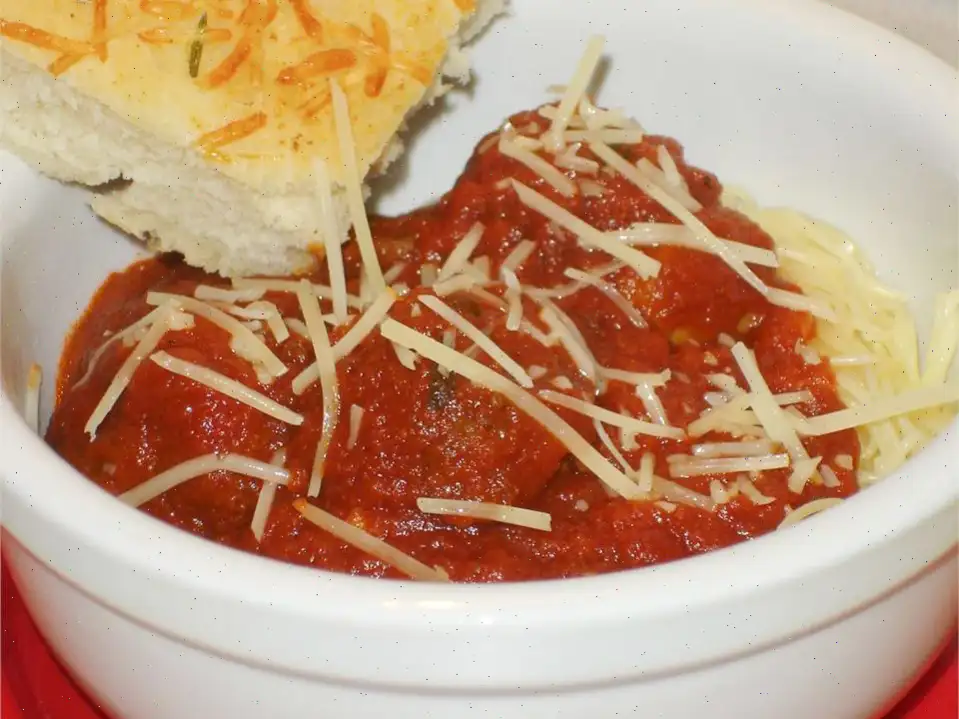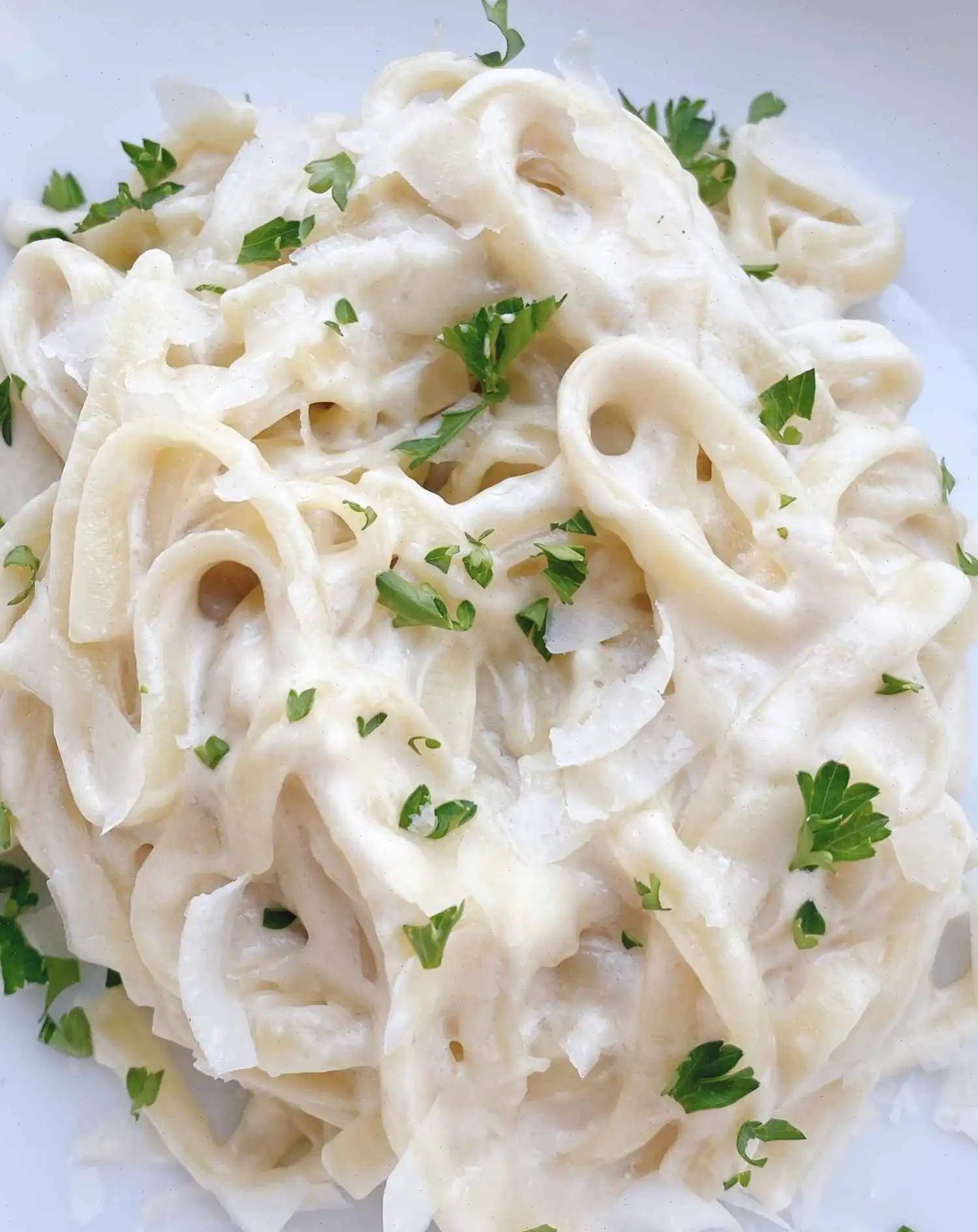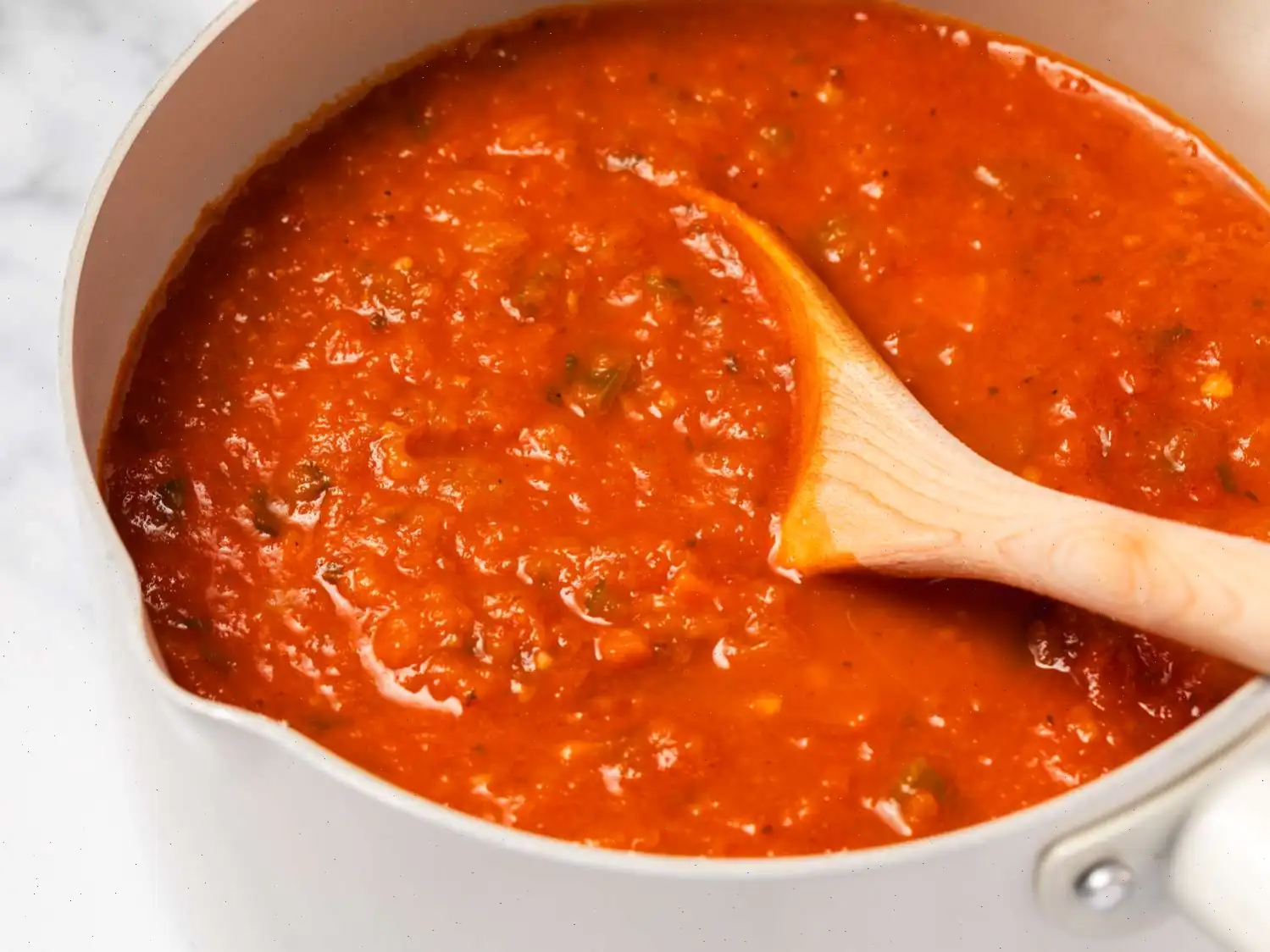
Simple Marinara Sauce Recipe
Ingredients
This recipe was developed at its original yield. Ingredient amounts are automatically adjusted, but cooking times and steps remain unchanged. Note that not all recipes scale perfectly. Original recipe (1X) yields 8 servings.
- 2 tablespoons olive oil
- 3 cloves garlic, minced
- 1 (28 ounce) can crushed tomatoes
- 1 (28 ounce) can tomato puree
- 2 tablespoons dried oregano
- 2 tablespoons dried parsley
- cup grated Romano cheese
- cup grated Parmesan cheese
- 2 bay leaves
- 1 teaspoon onion powder
Directions
- Heat oil in a large saucepan over medium heat. Add garlic and cook, stirring occasionally, until aromatic and tender, about 1 minute.
- Stir in the crushed tomatoes, tomato puree, oregano, parsley, Romano cheese, Parmesan cheese, bay leaves, and onion powder.
- Reduce the heat to low and let the sauce simmer for at least 40 minutes, stirring occasionally. This will allow the flavors to meld and deepen.
Nutrition Facts (per serving)
| Nutrition Facts | Amount | % Daily Value |
|---|---|---|
| Calories | 135 | |
| Total Fat | 6g | 8% |
| Saturated Fat | 2g | 9% |
| Cholesterol | 7mg | 2% |
| Sodium | 619mg | 27% |
| Total Carbohydrate | 18g | 7% |
| Dietary Fiber | 5g | 16% |
| Total Sugars | 5g | |
| Protein | 6g | 12% |
| Vitamin C | 21mg | 23% |
| Calcium | 159mg | 12% |
| Iron | 4mg | 23% |
| Potassium | 772mg | 16% |
* Percent Daily Values are based on a 2,000 calorie diet. Your daily values may be higher or lower depending on your calorie needs.
** Nutrient information is not available for all ingredients. Amount is based on available nutrient data.
If you are following a medically restrictive diet, please consult your doctor or registered dietitian before preparing this recipe for personal consumption.

History of Marinara Sauce
The origins of marinara sauce trace back to Italy, particularly to the southern regions like Naples and Sicily. While the exact moment of its creation is debated, it is widely believed that marinara was first developed by Italian sailors in the 16th century. They would prepare the sauce with simple, locally sourced ingredients such as tomatoes, garlic, and herbs, making it perfect for the long voyages at sea. The term marinara itself comes from the word marinaro, meaning sailor in Italian, reflecting its association with seafaring life. Over time, marinara sauce became an essential staple in Italian cuisine, particularly in pasta dishes, due to its fresh and simple flavor profile.
Regional Variations
Although marinara sauce has its roots in southern Italy, its popularity has led to regional variations across the country. In Naples, for example, the sauce is often made with fresh, locally grown tomatoes, and may be simmered for a longer time to deepen the flavor. In contrast, Sicilian marinara might include capers, olives, or anchovies for added depth. In the U.S., marinara has evolved into a go-to sauce for pizza and pasta, with some regions adding ingredients like sugar to reduce acidity or infusing it with a hint of red wine. Regardless of the variation, the essence of marinara remains the samesimple, fresh ingredients coming together to create a flavorful sauce.
How It Differs from Similar Dishes
While marinara sauce is a simple tomato-based sauce, it is often confused with other Italian sauces like Bolognese or Pomodoro. The key difference between marinara and Bolognese lies in the presence of meat. Bolognese is a meat-based sauce, typically made with ground beef, pork, or veal, and is simmered with tomatoes, wine, and cream, resulting in a rich, hearty texture. On the other hand, marinara is purely vegetable-based, with no meat, making it a lighter, vegetarian-friendly option. Pomodoro, another common Italian sauce, is very similar to marinara but is typically made with fewer herbs, focusing mainly on the fresh flavor of tomatoes. Marinara, however, can include a wider range of seasonings, such as oregano, basil, and onion powder.
Where It Is Typically Served
Marinara sauce is incredibly versatile and can be served in a variety of dishes. It is most commonly paired with pasta, particularly spaghetti, making it a classic choice for a quick and flavorful meal. Additionally, marinara is often used as a topping for pizza, especially in southern Italy. In the U.S., it is also a popular dipping sauce for breadsticks, mozzarella sticks, and other appetizers. In Italy, it might be served with fried calamari, or as a dipping sauce for focaccia. The simplicity of marinara sauce allows it to complement a wide array of dishes, making it a beloved sauce across different cuisines.
Interesting Facts About Marinara Sauce
- Tomatoes, the primary ingredient in marinara, were first introduced to Italy from the Americas in the 16th century. Initially believed to be poisonous, tomatoes were eventually embraced and became central to Italian cooking.
- In Naples, the birthplace of marinara, this sauce is often used as a topping for pizza Margherita, a dish that dates back to the late 19th century.
- Marinara sauce is one of the most common tomato-based sauces in the world and is loved for its fresh, tangy taste and simplicity.
- The basic ingredients of marinara saucetomatoes, garlic, herbs, and olive oilare also key elements in the Mediterranean diet, which is known for its health benefits.
Whether served over a plate of pasta or as a dipping sauce, marinara continues to be a beloved and essential part of Italian and Italian-American cuisine. Its rich history, regional variations, and simple ingredients make it a timeless favorite in kitchens around the world.
FAQ about Simple Marinara Sauce Recipe
Comments
Stephen Williams
07/30/2023 06:01:41 AM
The only extra ingredient I included was a chopped onion. I opted for organic crushed tomatoes and tomato puree. This recipe was simple to whip up with ingredients I already had, and my family enjoyed it. For next time, I plan to reduce the amount of oregano, add some basil, and a splash of red wine.
Carolyn Anderson
02/11/2025 03:04:01 PM
This entire website is fantastic. I have been preparing Italian cuisine for my family for 65 years, and these recipes are absolutely spot on. I will be sharing this website with my two granddaughters, who are tying the knot this spring, along with our family cookbook. Grazie!
Jennifer Jones
02/14/2025 06:46:09 PM
Great! I added diced tomatoes for an extra layer of texture.
Melissa Cruz
08/19/2023 11:14:10 AM
This dish was delicious as it was. I decided to enhance the flavor by adding some red pepper flakes.
Michael Williams
02/04/2024 05:22:02 AM
I was in a rush to prepare dinner for my family. I didn't have any sauce, so I whipped this up quickly. Even though I only simmered it for 20 minutes, my family absolutely adored it. I will definitely be making it again.








